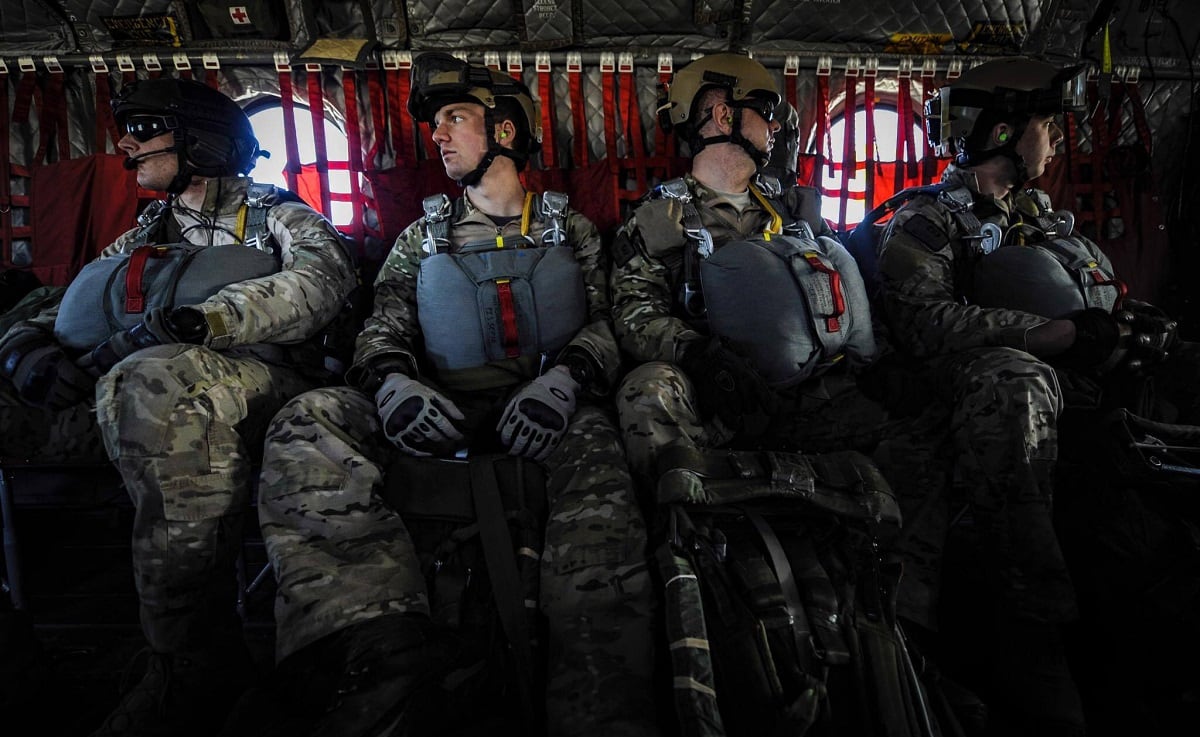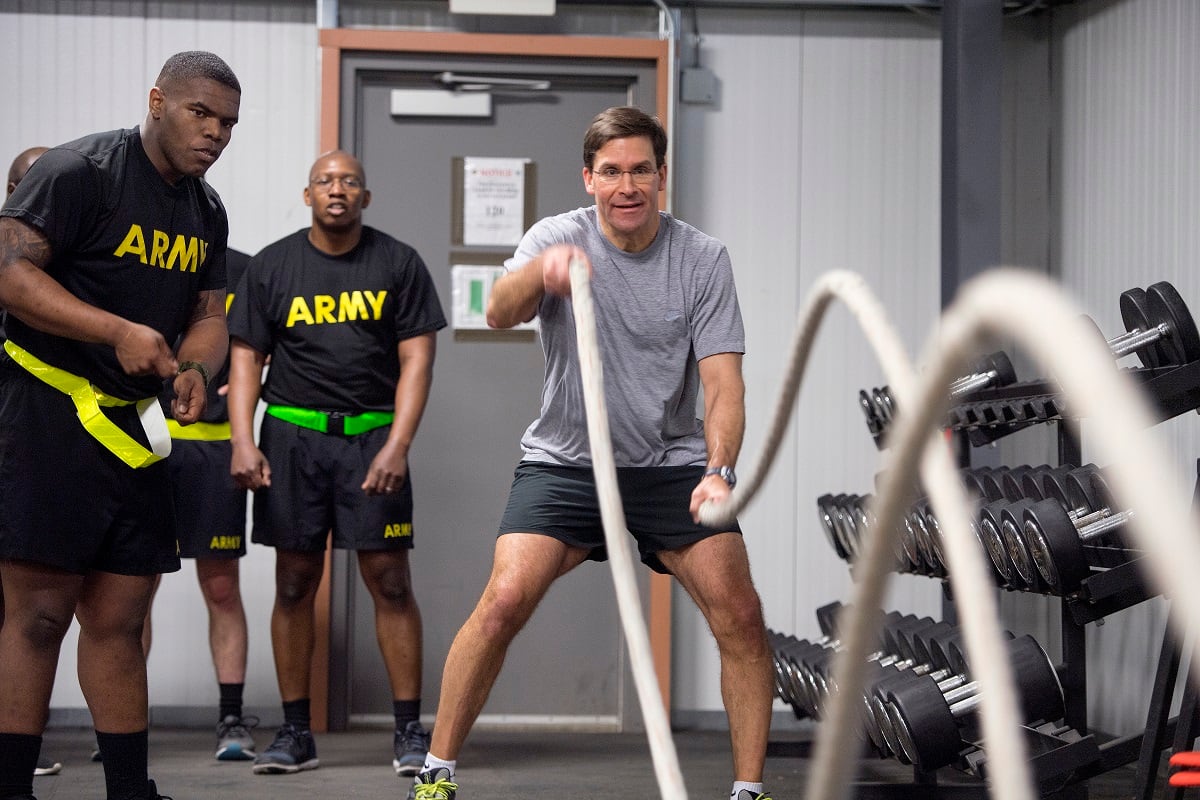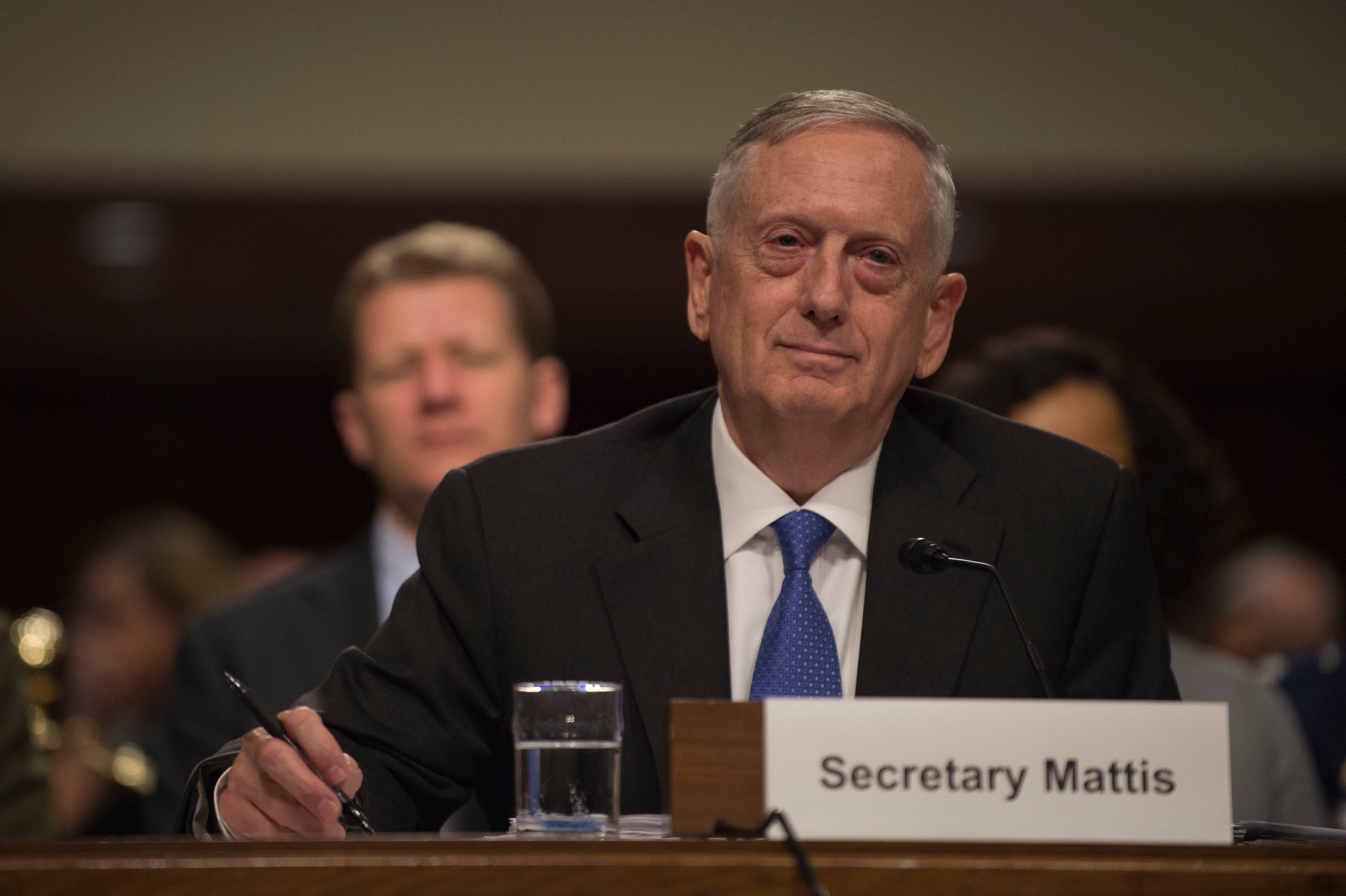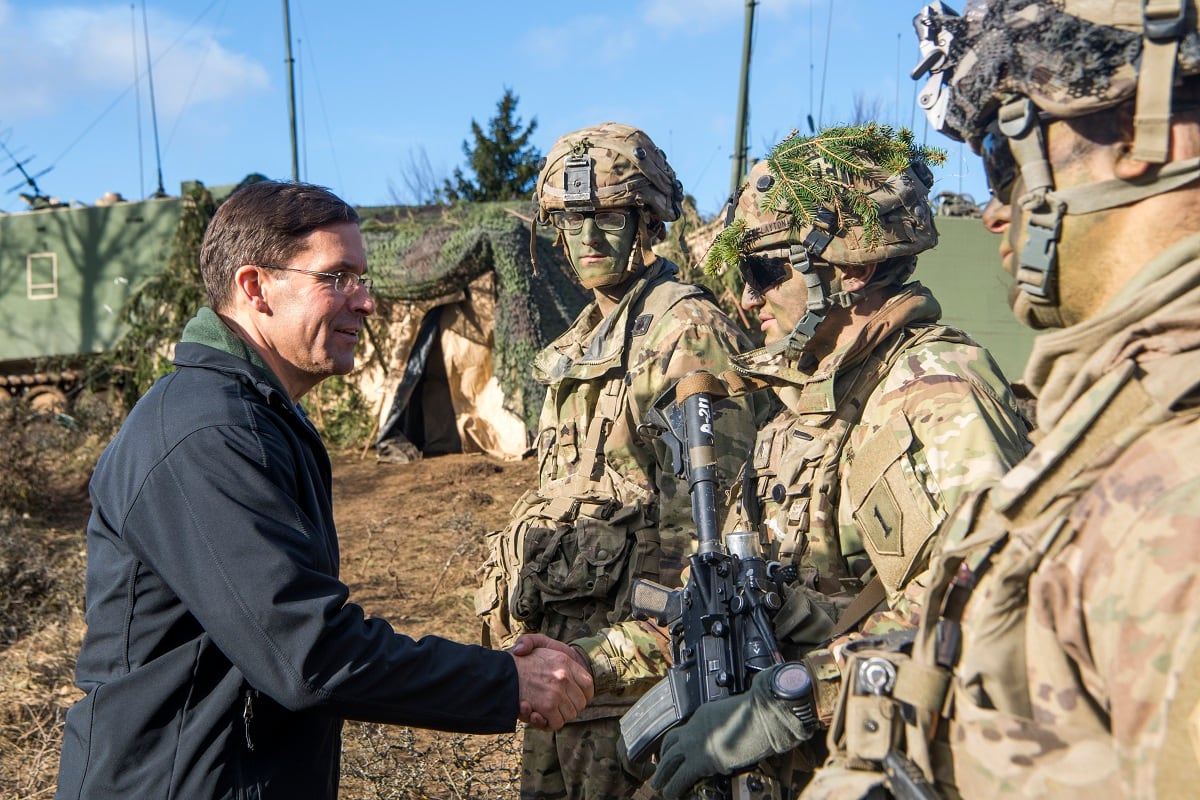As the Army moves to build a force that can take on a near-peer adversary, some of its most important — and immediate — initiatives start with the individual soldier.
This includes a soldier’s ability to deploy — a fundamental requirement for a force that’s in demand across Europe, Asia and Africa, as well as in Iraq and Afghanistan — and the everyday mandatory training and minutiae required of soldiers and their commanders.
Senior Army leaders are working hard on these issues, Army Secretary Mark Esper told Army Times April 4, and the efforts are all part of a larger plan to build a force that’s prepared and equipped to fight future wars.
“Where do I want to see the Army in 10 years?” Esper said. “I articulate that in terms of the ability to fight and win a war, [and] continue to conduct irregular warfare.”
But to get there, Esper said, the Army must overhaul its acquisitions process and develop its multidomain battle doctrine and propagate it into the Army’s schoolhouses.
It also must get its personnel management system “to the next level” to better match soldiers with assignments to meet the Army’s needs, he said.
By focusing on soldiers — and not just on vehicles and equipment — the Army hopes to better hone and train its most precious resource.
To start, the Army is working to determine how it’ll carry out a new Defense Department policy that would separate troops who have been non-deployable for 12 months or longer.
“Deployability is an issue,” Esper said. “For commanders, it’s a readiness matter, … and for soldiers, they look to their left and their right, and they know somebody is not deploying, and they wonder why, and they know it increases their frequency of churn.”
However, the Army also has quite a large number of non-deployable soldiers — including about 19,000 of them who are permanently unable to deploy because of a combat wound or severe illness, Esper said.
“We need to work our way through those numbers because those are 19,000 billets that are being occupied, that are non-deployable,” Esper said. “We need to take care of them. We need to be very empathetic to their challenges. We need to make sure that as they transition out they have good health care provided by the VA. But we are a team that plays away games, which means you have to be able to deploy.”
RELATED

In addition to the 19,000 soldiers who are permanently non-deployable, the Army has about 50,000 soldiers who are temporarily non-deployable, Esper said.
This includes soldiers who are missing a simple but required health care exam, or someone who sprained his ankle and is non-deployable until it heals.
“We need to make better decisions in terms of individuals and think about how we deploy, because what we’re trying to do is train to be more deployable and build a culture of deployability,” he said.

Streamlining mandatory training is another priority for senior Army leaders.
“There’s a lot of frustration out there with mandatory training and mandatory reporting, all these things we’ve burdened junior leaders with,” Esper said. “[Army Chief of Staff Gen. Mark Milley] and I are working hard to provide them relief on that front, and really empower our junior leaders and make them responsible, and to give them the freedom to train the soldiers in their units the way they feel is best to improve the readiness and lethality of their team.”
Some training is required by law or the Pentagon, but the majority are imposed by the Army, Esper said.
Esper said he hopes to soon release a list — round one, he said — of mandatory training the Army will either eliminate or reduce in frequency.
“I’ve already spoken to commanders, and I know the chief has given them guidance verbally, that if you know something really doesn’t make sense, and you think of other ways to improve the readiness and lethality of your force, then you should do it,” Esper said. “We’ll manage the risk imposed by the policy or guidance.”
Esper cited as an example National Guard units who have to complete about 40 days’ worth of mandatory training each year.
“If you’re a norma l Guardsman, two days a month, two weeks a year, you only have 39 day [training] days,” Esper said. “You can’t do it.”
RELATED

In the near-term, Esper’s top three priorities are readiness, modernization and reform, he said.
The Army continues to make “good progress” on readiness, thanks to the additional funding it received from Congress for 2018, he said.
“We hope to build upon that in ’19, so readiness is on the upswing,” Esper said.
This includes more combat training center rotations for soldiers and units, and moving soldiers from headquarters units and into operational units.
“The op tempo is very high. It’s much higher than people think,” Esper said. “We are a very, very busy force, and we are exceeding the DoD guidelines in terms of [boots-on-the-ground] and dwell time, so we need to get that right.”
Michelle Tan is the editor of Army Times and Air Force Times. She has covered the military for Military Times since 2005, and has embedded with U.S. troops in Iraq, Afghanistan, Kuwait, Haiti, Gabon and the Horn of Africa.




